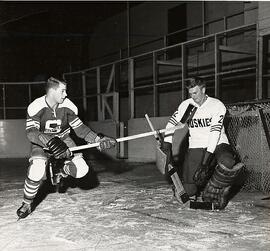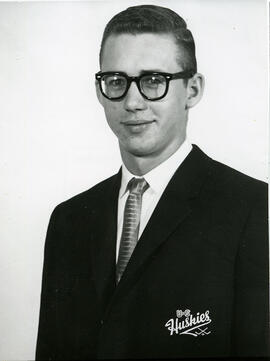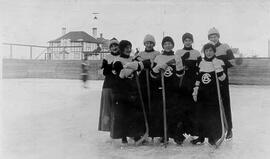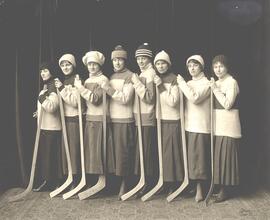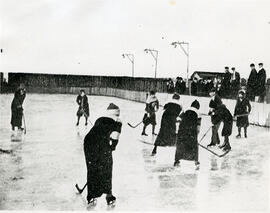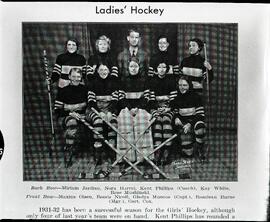- A-4063
- Item
- 1966
Big and Little Sisters hockey game during Pente Kai Deka Week.
Bio/Historical Note: From the Greek for ‘five and ten,’ Pente Kai Deka was created on 8 April 1911 with the first 15 women students on campus – five “big sisters” and ten “little sisters.” Every woman entering the University automatically became a member. Eventually the group became its own directorate within the Students Representative Council, and the PKD president, the vice-president of the SRC. Activities of the group included a Big Sister-Little Sister Dance, June in January, Jeanboree, a Spring Tea and a Frosh Week fashion show. As the sexual revolution loomed large in the late 1960s women on campus grew increasingly ambivalent toward the group, which had been seen by many female students as irrelevant and antiquated since midway through the decade. It was this attitude, as well as the sheer increase in the number of women and students in general at the University by the late 1960s that led to the group’s demise after the 1968-1969 academic year.


